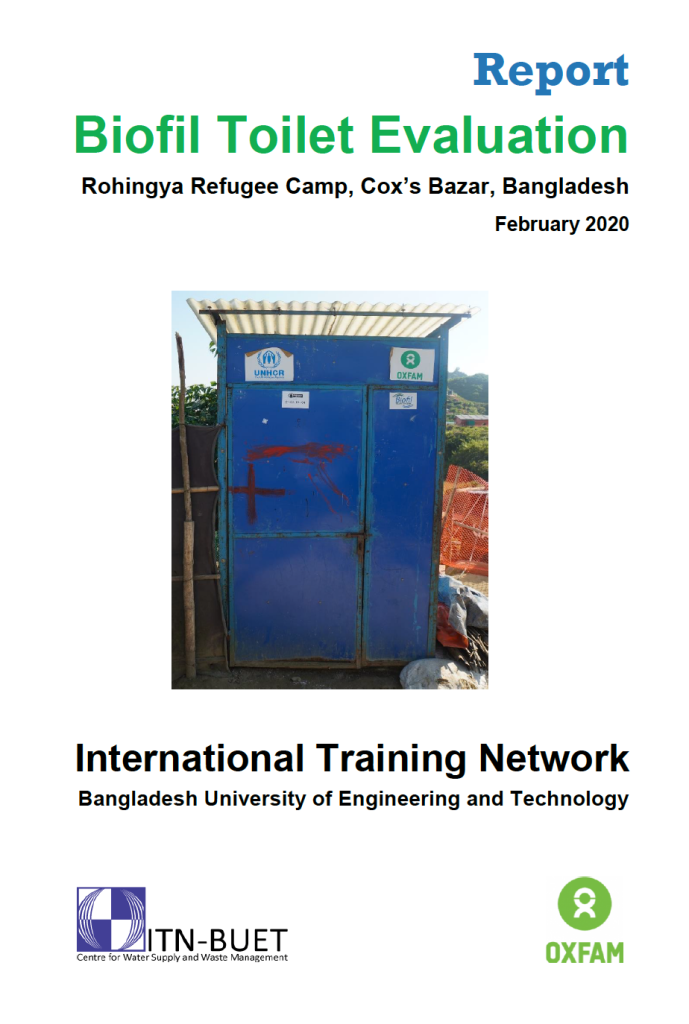Biofil Toilet Evaluation - Report
Author: International Training Network Bangladesh - University of Engineering and Technology (ITN-BUET), Oxfam
Year: 2020
Since August of 2017, extreme violence in Rakhine State of Myanmar has driven an estimated 646,000 people from the Rohingya community across the border into the Cox’s Bazar District of Bangladesh. The new arrivals have joined some 212,500 Rohingya in Cox’s Bazar, who had fled in earlier waves of displacement. Bangladesh government has provided shelter to the Displaced Rohingya Population (DRP) in camps located in Ukhia and Teknaf Upazilas of Cox’s Bazar. Access to safe drinking water and hygienic sanitation facilities is a priority for DRP population. A number of organizations including the Department of Public Health Engineering (DPHE), UN organizations (UNHCR, IOM, Unicef), I/NGOs, and development partners are working in the camps for providing water supply, sanitation and hygiene facilities. A number of sanitation technologies including pit-based latrines (single- and twin-pit), Biofil toilets, toilets with septic tanks and soakage pits have been installed in these camps. The containments of these toilets (i.e. pits or septic tanks) need to be desludged periodically to keep the toilets operational.
Unlike regular pit-based toilets, Biofil toilets have a digester in the pit; the digester consists of a porous bed (made in the form of a perforated concrete slab) that supports, on top of it, tiger worms placed on a bed of coconut fiber and straw. Fecal matter is collected on the digester bed, and the free liquid is drained through the porous bed of the digester. On top of the digester, the fecal solids are converted into vermicompost by the tiger worms. This process slows down the build-up of fecal matter in the digester. As a result, the pit/digester of a properly functional Biofil toilet should take a longer time to get filled (compared to a regular pit of similar volume), and the desludging frequency becomes longer. This is considered to be a major advantage of Biofil toilets.
A total of 2,176 Biofil toilets have been installed in different Rohingya camps in both Ukhia and Teknaf, by a number of organizations (e.g. Oxfam, ACF). Biofil toilets have also been installed in the host communities at household level in these Upazilas of Cox’s Bazar. It is important to assess performance of Biofil toilets in both Rohingya camps and host communities, in order to understand their relative advantages/ disadvantages over regular pit-based latrines. Oxfam requested ITN-BUET to conduct a comprehensive review of Biofil toilet in emergency situation in Rohingya camps at Cox’s Bazar. In response to request, ITN-BUET carried out a study to evaluate the performance of Biofil toilets in Rohingya camps at Cox’s Bazar. The evaluation covered the assessment of performance of both Biofil toilet and regular pit-toilets, both in camps and host community.
Rating
Would you like to see other resources here?
Give us your feedback"*" indicates required fields
Still have questions?
You could not find the information you were looking for? Please contact our helpdesk team of experts for direct and individual support.


